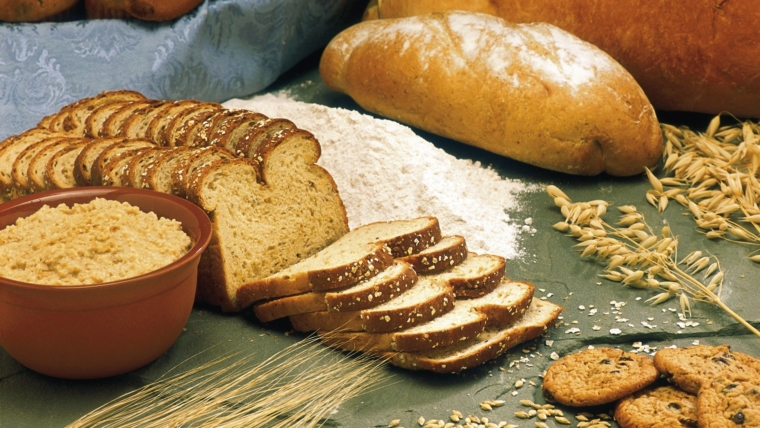
Allergies and food intolerance: wheat, gluten and dairy products
Allergies are an unusual response of our immune system to various environmental factors and there is a significant difference to food intolerance. More about allergy and food intolerance, read below.
Allergies vs. food intolerance
First of all, it is necessary to clarify the difference between food allergy and food intolerance. If you are allergic to some type of food – for example, nuts or shellfish – troubles usually begin almost as soon as you put your fork down (although some allergic reactions manifest after 24 to 72 hours). You may feel sting in your mouth and tongue, and your throat may hinder you. It is possible to experience shortness of breath, and in the worst case it may cause serious and sometimes deadly form of shock that is called anaphylactic shock. In food allergy reaction of the immune system occurs. If there is no reaction to the immune system, then you have food intolerance, or food sensitivity, which is often caused by a problem in metabolism or food digestion. Although food intolerance can affect your health, it is not a direct threat to your life.
It is sometimes difficult to distinguish the food intolerance and allergies because the symptoms overlap. Both can cause chills, diarrhea and nausea. Some foods, such as dairy products, can cause real allergic reactions and non-allergic reactions. Food allergies and intolerance are commonly caused by wheat, gluten, dairy products, soy, eggs, peanuts, nuts, fish and shellfish. And in case of allergy and food intolerance, it is important to go to medical examinations to find out exactly what you are reacting to. Obviously, part of the treatment will also include the elimination of foods that cause the reaction but without sacrificing the intake of the necessary nutrients.
Unfortunately, food allergies can not be prevented nor treated, but some, such as allergies to milk and eggs in children, with age are reduced or even disappear. It is good news that most foods that cause unpleasant reactions have tasty substitutes, perhaps even better flavor than foods that you have to give up. Who knew that the millet and buckwheat could be so tasty substitute for wheat, or that, when cow’s milk creates digestive disorders, soy milk might even fix the taste of cereal?
For people who can not eat wheat
- Corn, rice, millet, barley, oats and other cereals

If you are allergic to wheat, you know it is one of the most difficult food allergies. The first step is to eject wheat from all day meals and all that contains wheat, such as wheat starch or soy sauce. To replace the wheat, and all that wheat as whole grains provides, select integral, unchanged substitutions such as corn flour, brown rice or proso, which provide equal B vitamins and fiber.
For people who can not eat gluten
- Honey, flax, maranade, beans, proso, keno, rice and other gluten-free cereals
For people who do not tolerate gluten, protein from wheat, barley, scallops, rye, pies and wheat, bread, rolls and cakes are forbidden. Serious form of intolerance of gluten, celiac disease, can damage the intestine or even endanger life. This illness is also associated with Duhring’s disease, a skin disease manifested by a heritable rash in the form of dandruff. Even gluten-free oats may be a problem if they come into contact with grains containing gluten during grinding or storage. Fortunately, gluten-allergic people do not have to live without cereals. Wheat, corn and other cereals provide a great amount of fiber and B vitamins. Cereals that you have to consume must be stored and processed in places where they will not come into contact with gluten.
For people who can not eat dairy products
- Rice, almond and soy milk and other substitute foods for dairy products, plus calcium rich foods
Milk is not always good for our health. It can cause allergies and sensitivity. People with allergies react to casein or whey, which are parts of dairy protein. People who do not tolerate milk react to lactose, sugar from cow’s milk. Most of us produce enough quantities of lactase enzymes to avoid lactose reaction, but those who do not have enough lactose. Lactose, get into the colon, where trouble begins. In both cases the symptoms are not pleasant; Lack of lactose causes swelling and diarrhea, asthma, skin rash, and reactions can occur even after two days, although the effects usually occur immediately after the milk is consumed.
Dairy products are known to “starve” from unexpected places, such as menthol candies, energy plates, and salad sauces. For many of us, dairy products are also a source of calcium, nutrients necessary for solid bones, blood clotting, and transmission of nerve impulses. Although, when it comes to flavor, drinks such as rice, almond and soy milk are excellent substitutes for cow’s milk in combination with grain flakes or coffee, they can not completely compensate for their nutrients.
Best vegan and vegetarian protein sources? – here.

Author: Ema Brajdić, IFBB Bikini

I give consent to Be Seen Be Popular (BSBP) to process and use my personal information ( name and e-mail address ) in order to answer to my inquiry and send information associated with this website.